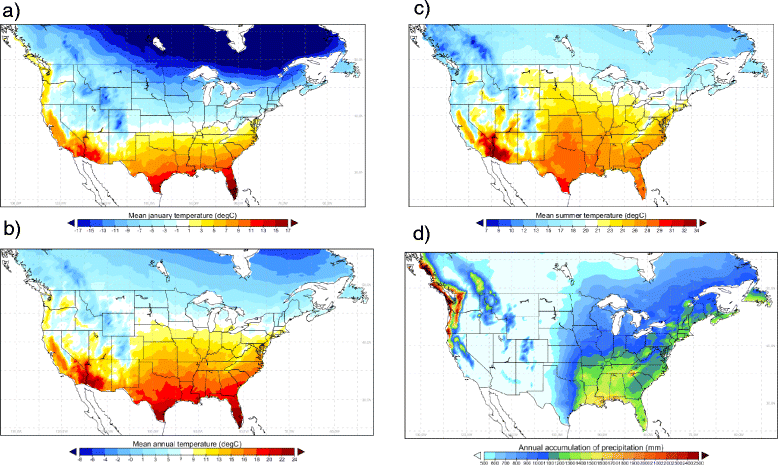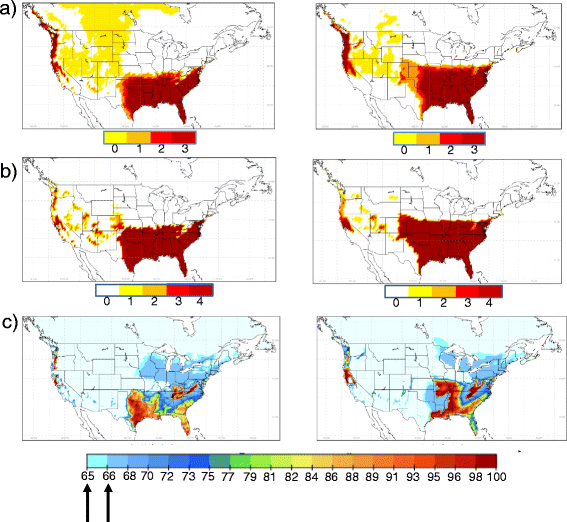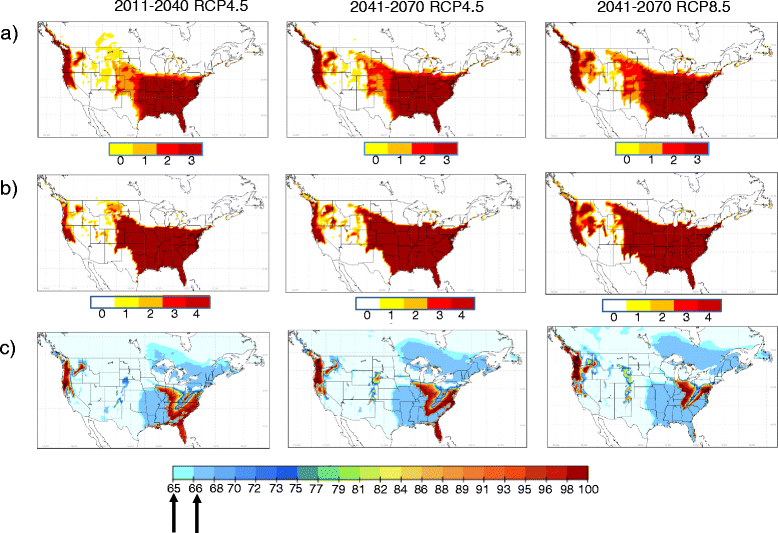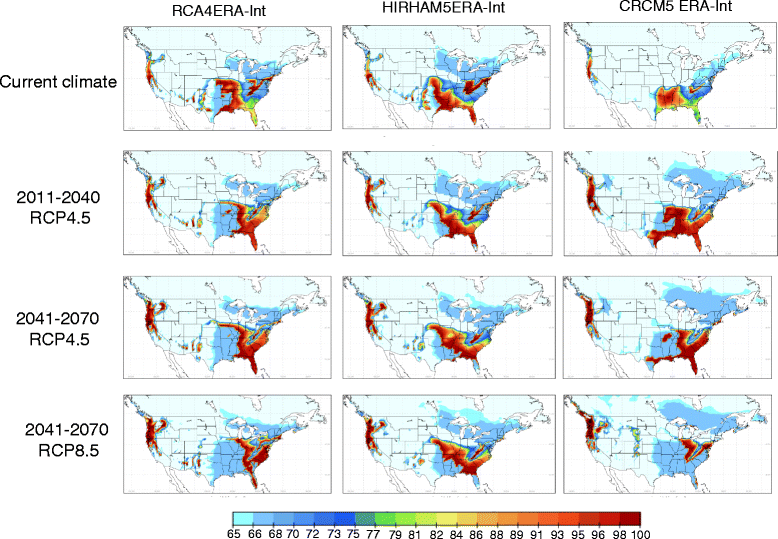Recent and projected future climatic suitability of North America for the Asian tiger mosquito Aedes albopictus
- PMID: 25441177
- PMCID: PMC4261747
- DOI: 10.1186/s13071-014-0532-4
Recent and projected future climatic suitability of North America for the Asian tiger mosquito Aedes albopictus
Abstract
Background: Since the 1980s, populations of the Asian tiger mosquito Aedes albopictus have become established in south-eastern, eastern and central United States, extending to approximately 40°N. Ae. albopictus is a vector of a wide range of human pathogens including dengue and chikungunya viruses, which are currently emerging in the Caribbean and Central America and posing a threat to North America.
Methods: The risk of Ae. albopictus expanding its geographic range in North America under current and future climate was assessed using three climatic indicators of Ae. albopictus survival: overwintering conditions (OW), OW combined with annual air temperature (OWAT), and a linear index of precipitation and air temperature suitability expressed through a sigmoidal function (SIG). The capacity of these indicators to predict Ae. albopictus occurrence was evaluated using surveillance data from the United States. Projected future climatic suitability for Ae. albopictus was obtained using output of nine Regional Climate Model experiments (RCMs).
Results: OW and OWAT showed >90% specificity and sensitivity in predicting observed Ae. albopictus occurrence and also predicted moderate to high risk of Ae. albopictus invasion in Pacific coastal areas of the Unites States and Canada under current climate. SIG also well predicted observed Ae. albopictus occurrence (ROC area under the curve was 0.92) but predicted wider current climatic suitability in the north-central and north-eastern United States and south-eastern Canada. RCM output projected modest (circa 500 km) future northward range expansion of Ae. albopictus by the 2050s when using OW and OWAT indicators, but greater (600-1000 km) range expansion, particularly in eastern and central Canada, when using the SIG indicator. Variation in future possible distributions of Ae. albopictus was greater amongst the climatic indicators used than amongst the RCM experiments.
Conclusions: Current Ae. albopictus distributions were well predicted by simple climatic indicators and northward range expansion was predicted for the future with climate change. However, current and future predicted geographic distributions of Ae. albopictus varied amongst the climatic indicators used. Further field studies are needed to assess which climatic indicator is the most accurate in predicting regions suitable for Ae. albopictus survival in North America.
Figures






References
-
- European Environment Agency . ᅟ. ᅟ. The impacts of invasive alien species in Europe, technical report No 16/2012.
-
- Lowe S, Browne M, Boudjelas S, De Poorter M. ᅟ. ᅟ: Published by The Invasive Species Specialist Group (ISSG) a specialist group of the Species Survival Commission (SSC) of the World Conservation Union (IUCN); ᅟ. 100 of the World’s worst invasive alien species. A selection from the global invasive species database.
-
- European Centre for Disease Prevention and Control . ᅟ. ᅟ. Aedes albopictus.
Publication types
MeSH terms
LinkOut - more resources
Full Text Sources
Other Literature Sources
Medical

